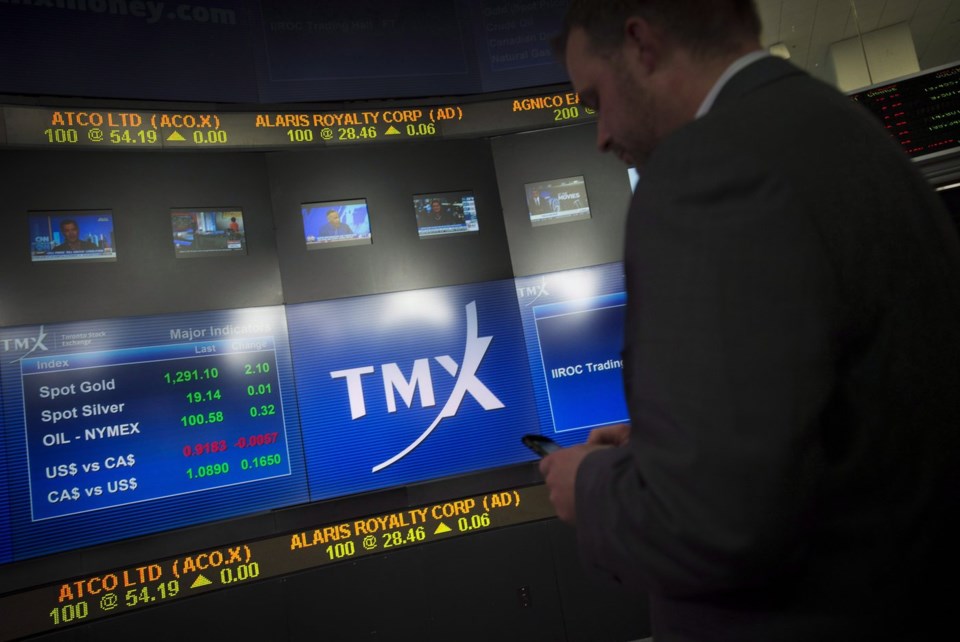Economic numbers out of the United States helped boost Canada’s main stock index more than 200 points on Thursday, as most U.S. stocks drifted upward amid the jumble of mixed reports that showed varied ripple effects from President Donald Trump’s trade war.
The figures south of the border showed consumers are spending less on retail, inflation is easing off and manufacturing is still contracting.
While unpleasant news for the economy broadly, the data boosted the likelihood of a rate cut by the U.S. Federal Reserve later this year, said Anish Chopra, managing director with Portfolio Management Corp.
“Let’s say the U.S. economy is slowing and inflation is cooling, that would allow the Fed to cut rates later this year. That tends to be a supportive backdrop for stock prices,” Chopra said.
On Thursday, the S&P/TSX composite index jumped 205.03 points to 25,897.48, helped by strength in the industrial, telecommunication and utility sectors and capping off more than a month of steady climbing.
"If you've got interest rates coming down a bit, that tends to be supportive for dividend-paying stocks. And you do have dividend-paying stocks in areas like telecom, financial services," Chopra said.
In New York, the Dow Jones industrial average rose 271.69 points to 42,322.75. The S&P 500 index increased 24.35 points to 5,916.93, while the Nasdaq composite fell 34.49 points to 19,112.32.
Meanwhile, the trade war continues to throw a wrench into corporate plans.
Even though China and the United States recently agreed on a 90-day stand-down for many of their import duties, “there could be potential issues with respect to tariffs,” Chopra said.
Like other American companies struggling through Trump’s on-again-off-again tariff rollout, Walmart on Thursday opted to hold off on forecasting how much profit it will make in the current quarter.
America’s largest retailer also said it must raise prices due to higher costs caused by the import tariffs.
“There’s certainly optimism for an agreement to come. But despite that, there is still a backdrop of tariffs and that’s still working its way through the economy,” Chopra said.
“We could have a tariff-driven increase in prices coming.”
U.S. wholesale prices fell 0.5 per cent last month from March, the first drop since October 2023 and the biggest in five years, according to the Producer Price Index, which tracks inflation before it hits consumers.
Sales at American retail stores and restaurants rose just 0.1 per cent in April from March, the U.S. Commerce Department said Thursday. That is much lower than the previous month’s 1.7 per cent gain, which reflected a surge in car sales as consumers accelerated purchases ahead of Trump’s 25 per cent duty on auto imports coming into effect this month.
The Canadian dollar traded for 71.51 cents US compared with 71.61 cents US on Wednesday.
The July crude oil contract was down US$1.53 at US$61.15 per barrel and the June natural gas contract was down 13 cents US at US$3.36 per mmBTU.
The June gold contract was up US$38.30 at US$3,226.60 an ounce and the July copper contract was up three cents US at US$4.68 a pound.
This report by The Canadian Press was first published May 15, 2025.
Companies in this story: (TSX: GSPTSE, TSX: CADUSD)
— With files from The Associated Press
Christopher Reynolds, The Canadian Press




